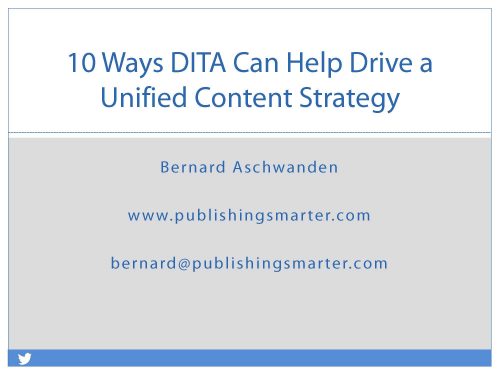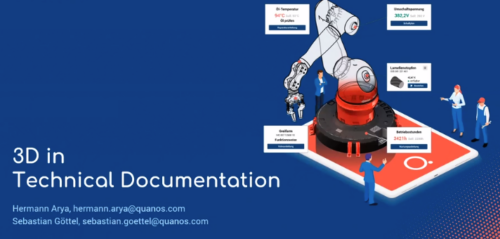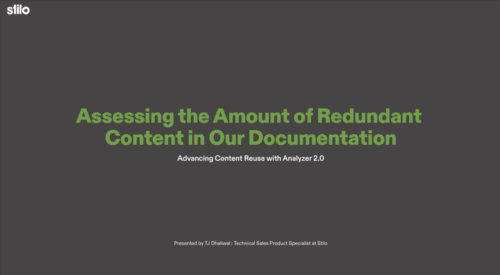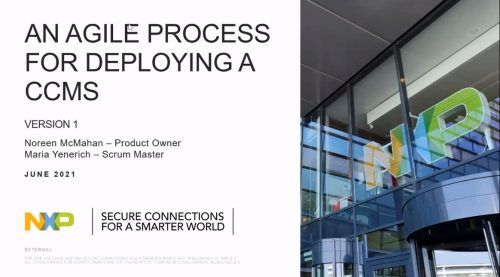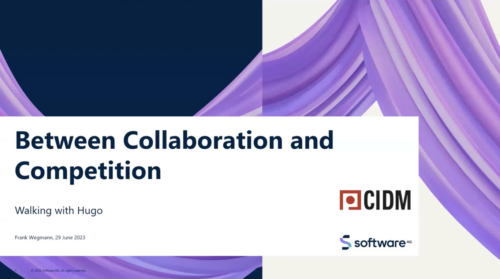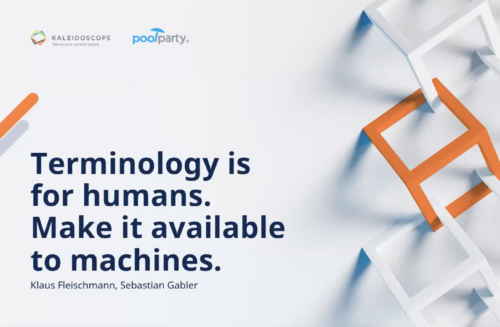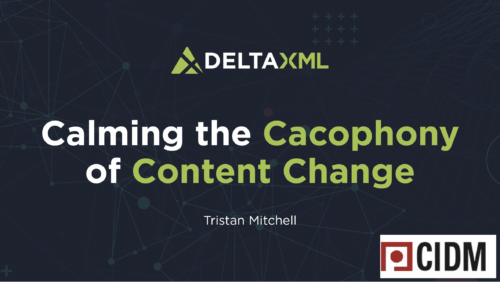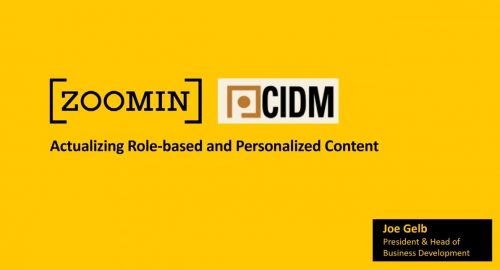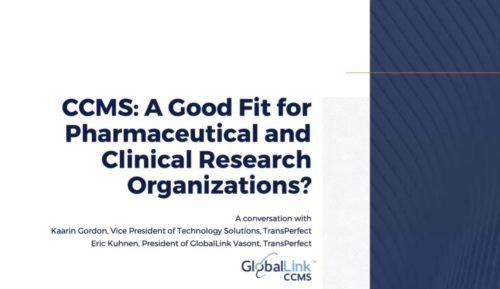-
Date: October 2, 2019 Prior to DITA, there wasn’t much we could do when it came to strategizing with the rest of the enterprise and pooling our tools, processes, and content. That’s no longer the case; as we see more and more DITA adoption from many expected and unexpected divisions, from Training and Support to Academic Publishers, Operations and Insurance. A unified, DITA-driven, enterprise-wide approach to content can have a profound impact on the enterprise. When content created by the enterprise is treated as a valued and valuable corporate asset, it’s a win-win-win situation. It’s more efficient for the enterprise and easier for content creators. But end users reap the real benefit by getting the content they need when they need it. In this webinar, Bernard Aschwanden, will take you through 10 ways in which DITA can help drive unified content strategy. Presented by: Bernard solves documentation-based problems and helps companies generate more revenue. He guides clients through the best processes to create, manage, and deliver content. Once content is delivered, he helps socialize the message, understand and act on feedback, and improve the process and workflow. He is the founder of Publishing Smarter (www.publishingsmarter.com), an Associate Fellow of STC, and a Past President of STC. Bernard has helped hundreds of companies implement successful solutions. He is focused on publishing better, publishing faster, and publishing smarter.
-
Recorded on September 15, 2022

3D has become indispensable in engineering departments. But 3D models rarely find their way into technical documentation. In spare parts catalogs, 3D catalogs have become standard thanks to automatic processing. There, people appreciate that 3D views are intuitively understandable and offer additional interactivity in online documentation. What can technical authors learn from the 3D experiences of the spare parts catalog world?
What steps are necessary in a CCMS to not only visually enhance online documentation with interactive 3D data, but also to enable new access to information? Which formats and tools can be used?
Presented by:
Sebastian Göttel is Head of Marketing and Product Management at Quanos Content Solutions GmbH. The computer scientist has been involved with XML editing systems and content delivery since 1998. In the Tekom environment, he worked on version 1.0 of the iiRDS standard. [email protected]
Hermann Arya is a digital professional with 15+ years of experience in the aftersales project environment. In Europe he was and still is responsible for the revolution and evolution of 3D visualizations in the service information system context. As Head of Professional Service at Quanos Service Solutions GmbH and through the execution of well over 150 customer projects, he has also been able to build up extensive knowledge of the value chain around service information systems. [email protected]
-
Recorded on April 26, 2023

One significant benefit of adopting a structured standard like DITA is content reuse, which can reduce redundancy, improve consistency, and minimize overall content. However, due to typos, partial matches, and other inconsistencies, estimating the value of content reuse can be challenging- especially before the conversion occurs. By using Analyzer, users can narrow down their approximation and investigate similar matches in their source content before the conversion, providing valuable insight into the potential benefits of adopting a structured standard. Capture valuable metrics to substantiate content projects to key stakeholders. Learn how businesses can manage their content more effectively, increase productivity, and better understand content reuse's value in their documentation.
Join TJ as he uses Stilo’s Analyzer to investigate source content for hidden reuse. The latest release from Stilo offers a range of improvements to the user management system, product architecture, and sequence GUI redesign to streamline your content management process.
Presented by TJ Dhaliwal, Stilo
TJ Dhaliwal is a Technical Sales Product Specialist at Stilo, helping customers uncover solutions to their content conversion needs. With a solid technical background in engineering and a passion for public speaking, he’s successfully bridged the gaps between project stakeholders. As a problem solver, TJ has helped several enterprise-level companies convert tens of thousands of pages of their content to DITA.
-
June 30, 2021 NXP successfully deployed a DITA CCMS in 2016, in a SaaS environment, to manage technical product documentation. A software and system upgrade to Tridion Docs 14 (CCMS) was planned in 2019-20 to take advantage of new capabilities, performance improvements, system and infrastructure updates. Managing a successful CCMS upgrade requires detailed coordination, planning, testing, communication, and execution. From the webinar, you will learn how NXP effectively utilizes SAFe methodologies, together with their CCMS vendor RWS, to manage and execute the upgrade. Noreen and Maria worked together to coordinate activities on an NXP Agile Release Train (ART) as both are SAFe-certified. Noreen heads the RWS core team, which consists of representatives from several NXP business lines. Maria is from IT, working as the upgrade project Scrum Master. Overall, the upgrade was a success, as it was completed on time and within budget. NXP did encounter some unexpected issues that were managed following this process. During this webinar, Noreen and Maria will discuss how the business and IT benefited by utilizing SAFe methodologies to document CCMS configurations, develop and execute test cases for upgrade testing, managed communications with RWS and third-party vendors, communicated benefits to the business users, and moved all users into an upgraded production system with minimal interruptions. Presented by: Maria Yenerich works as a Scrum Master within the NXP Marketing Information Technology (IT) group. With 20+ years of system management experience, Maria has an undergraduate degree from Creighton University and a Master’s of Business Administration from the University of Illinois. Noreen McMahan has a Ph.D. from the University of Texas in Austin. In 2008, Noreen joined a team deploying a new CCMS in a global company. For almost a decade, she trained users of the CCMS around the world. She authored the online training in the DITA environment using the same tools as the writers and engineers she trained. She began her role as NXP RWS Product Owner after working on a team that deployed SDL LiveContent Architect as the new NXP CCMS in 2016. Later, as the 2020 pandemic gained momentum, Noreen worked on an Agile team that successfully completed an RWS upgrade of the CCMS to Tridion 14. She, therefore, has experience in deploying a new CCMS and in upgrading an existing one. Chip Gettinger is VP Global Solutions Consulting at RWS, managing a team that works with customers in maximizing global content with RWS. He has experience working with customers to develop global content strategies, business ROI adoption drivers, change management, and technology adoption for component content management systems. He speaks and blogs about customer successes working closely with industry standards, partners, and customers in technology solutions and deployments.
-
Recorded on June 29, 2023
 In recent years the software industry has seen a rising trend towards lightweight documentation on the side of SMEs. While this may work on a small scale, it may get tricky when there is a need to interact with more corporate documentation environments. Bridging the gap between markup and markdown can present challenges not only on the technical level. So-called static site generators (SSG) are often used to bring Markdown content to the audience, focusing on speed, layout and ease of use, but they lack productivity features that are baked into DITA right away and essential to technical documentation. Enter a scenario in which you need to pull markup-agnostic content contributors to the other side and learn how Lightweight DITA might help you to foster collaboration instead of deepening competition. Let us see how far a walk with Hugo, a very popular SSG, can take us in this scenario and discuss the implications of a fragmenting corporate documentation landscape.
In recent years the software industry has seen a rising trend towards lightweight documentation on the side of SMEs. While this may work on a small scale, it may get tricky when there is a need to interact with more corporate documentation environments. Bridging the gap between markup and markdown can present challenges not only on the technical level. So-called static site generators (SSG) are often used to bring Markdown content to the audience, focusing on speed, layout and ease of use, but they lack productivity features that are baked into DITA right away and essential to technical documentation. Enter a scenario in which you need to pull markup-agnostic content contributors to the other side and learn how Lightweight DITA might help you to foster collaboration instead of deepening competition. Let us see how far a walk with Hugo, a very popular SSG, can take us in this scenario and discuss the implications of a fragmenting corporate documentation landscape.
Presented by Frank Wegmann
Frank Wegmann has 20+ years of experience in the markup world. Rooted in multilingual university research projects using SGML and XML, he has been advancing custom automated build systems for technical documentation at Software AG since 2001. In recent years the original focus shifted to DITA, and, inevitably, also Markdown. He is a regular speaker at international conferences and engaged in OASIS DITA committees, where he now also acts as co-chair of the Lightweight DITA subcommittee.
-
September 29, 2021 Not all Analytics are created equal. Nor are they fit for the same purpose. Google Analytics and other web analytics tools are incredibly helpful for marketing content. But when it comes to product documentation, they are outranged by dedicated Content Analytics. Next-gen Content Analytics is designed for technical content and understand the complexity and structure of your documentation down to the topic level. Far beyond the web analytics capabilities, they generate the type of insights that benefit not only the tech content professionals but the entire organization. In this webinar, you will learn how the documentation team can capture meaningful content metrics and drive change and improvement to the content, the product, and ultimately to customer service and user satisfaction leveraging dedicated Content Analytics. Presented by: Fabrice Lacroix is a serial entrepreneur and a technology pioneer. He has been working for 25 years on the development of innovative solutions around search technology, content enrichment and AI. He is the founder of Fluid Topics, the leading Content Delivery Platform that reinvents how users search, read and interact with technical documentation.
-
January 17, 2024 9:00 am – 10:30 am PT | 12:00 pm – 1:30 pm ET | 5:00 pm – 6:30 pm GMT

Far too often, GenAI projects are considered the exclusive realm of IT, while Knowledge and Content Development teams remain in the background. Unfortunately, this approach often leads these projects to failure.
Presented by Fabrice Lacroix, Lief Erickson, and Amber Swope
Join us for an insightful webinar exploring why content developers and information architects must be at the forefront of GenAI Projects. Discover how their expertise and insights propel AI initiatives, transforming content into dynamic, user-centric solutions. Learn why empowering content specialists with GenAI projects is critical for fostering innovation and enhancing customer experiences.
This webinar is presented by Amber Swope DITA specialist at DITA Strategies, Lief Erickson, Principal Consultant at Intuitive Stack, and Fabrice Lacroix, CEO and founder of Fluid Topics.
Fabrice Lacroix is a serial entrepreneur and a technology pioneer. He has been working for 25 years on the development of innovative solutions around search technology, content enrichment and AI. He is the founder of Fluid Topics, the leading Content Delivery Platform that reinvents how users search, read and interact with technical documentation.
 Lief Erickson is co-founder of Intuitive Stack, a content strategy consultancy. He holds a master’s degree in Content Strategy from FH Joanneum (Austria), where he teaches information architecture. ContentOps, taxonomies, and search are leading interests for Lief, who has held positions as a tech writer and IA.
Lief Erickson is co-founder of Intuitive Stack, a content strategy consultancy. He holds a master’s degree in Content Strategy from FH Joanneum (Austria), where he teaches information architecture. ContentOps, taxonomies, and search are leading interests for Lief, who has held positions as a tech writer and IA.
 Amber Swope is an internationally recognized Information Architect, DITA expert, and IA consultant. With over 20 years of information development experience and 15 years of DITA expertise, Amber specializes in helping organizations create opportunity through IA.
Amber Swope is an internationally recognized Information Architect, DITA expert, and IA consultant. With over 20 years of information development experience and 15 years of DITA expertise, Amber specializes in helping organizations create opportunity through IA. -
Recorded on June 14, 2023

Delivering Value to Customers Is More Imperative Than Ever.
Join Acrolinx VP of Global Partner and Alliances, Dan Nutburn and Director of Partner Solutions, Jamila Elouazani for this webinar as they discuss:- How Salesforce Service Cloud users can improve the quality and consistency of their content
- Real-world examples of how and why customers are using the newly updated Salesforce Knowledge + Acrolinx Integration
- Why the AppExchange program is so important to Salesforce and its customers
This webinar will also feature special guest Julia Taube, ISV Manager at Salesforce.
Presented by Daniel Nutburn and Jamila Elouazani Daniel Nutburn is an accomplished executive and the Vice President of Global Partners and Alliances at Acrolinx. Daniel's got a wealth of experience in channel development, alliance management, and software solution selling. He's built an international partner network and has a solid track record of success with blue-chip and high-growth software companies.
Beyond his professional achievements, Dan is most proud of his ability to embarrass his daughters with his Karaoke singing and Cacti collection. LinkedIn: https://www.linkedin.com/in/daniel-nutburn/
Daniel Nutburn is an accomplished executive and the Vice President of Global Partners and Alliances at Acrolinx. Daniel's got a wealth of experience in channel development, alliance management, and software solution selling. He's built an international partner network and has a solid track record of success with blue-chip and high-growth software companies.
Beyond his professional achievements, Dan is most proud of his ability to embarrass his daughters with his Karaoke singing and Cacti collection. LinkedIn: https://www.linkedin.com/in/daniel-nutburn/
 Jamila Elouazani is the Director of Partner Solutions, Global at Acrolinx, a leading content optimization technology for enterprise companies. With years of experience working in solution and product-focused environments, Jamila has honed her skills in providing technical support to businesses looking to close deals with Fortune 500 companies.
Jamila Elouazani is the Director of Partner Solutions, Global at Acrolinx, a leading content optimization technology for enterprise companies. With years of experience working in solution and product-focused environments, Jamila has honed her skills in providing technical support to businesses looking to close deals with Fortune 500 companies.In addition to her professional accomplishments, Jamila is a family-oriented individual who enjoys expressing her creativity through singing and fashion design. Her passion for both the arts and technology has allowed her to bring a unique perspective to her work in the content optimization industry.
With her strong technical background and creative mindset, Jamila has become a respected thought leader in the industry and is committed to helping businesses achieve their content optimization goals.
-
Recorded on June 21, 2023
 Taxonomies and terminologies can be seen as different sides of the same coin. However, the focus is quite different. Taxonomies make linguistic data available for machines and humans to distill knowledge and often to manage chaos. Terminologies harmonize language, make sure everyone uses consistent and correct words, and try to avoid chaos from the outset. Organizations obviously require both, so it is only natural for Semantic Web Company and Kaleidoscope to integrate their two platforms and offer a combined taxonomy and terminology management solution.
Taxonomies and terminologies can be seen as different sides of the same coin. However, the focus is quite different. Taxonomies make linguistic data available for machines and humans to distill knowledge and often to manage chaos. Terminologies harmonize language, make sure everyone uses consistent and correct words, and try to avoid chaos from the outset. Organizations obviously require both, so it is only natural for Semantic Web Company and Kaleidoscope to integrate their two platforms and offer a combined taxonomy and terminology management solution.
This presentation and demo show you:
- how to connect your Pool Party taxonomy to the Kalcium terminology suite
- and add terminology benefits to your existing data:
- human-grade, rich metadata, organizational decision workflows, and automatic guidance in word choice for authors and translators alike
Presented by Klaus Fleischmann and Sebastian Gabler

Klaus Fleischmann studied translation and IT in Vienna, and holds an MA in Conference Interpreting from Monterey, California, and a MAS in Technical Communication from Krems, Austria. In 1996, he founded Austria-based Kaleidoscope, a company implementing content, translation, and terminology management processes for internationally active companies. Kaleidoscope develops online collaboration software for enterprise-level terminology workflow, translator query management, in-country review, etc., making the translation quality process comprehensible and strategically manageable. In 2007, he became CEO of Austria´s leading LSP, Eurocom Translation Services. Always active in the industry, Klaus got voted into the Gala Board of Directors in 2015 and 2017.
 Sebastian Gabler originally trained as a Recording Producer with a diploma from the Berlin University of the Arts (UdK) and 5 years of music production for radio, TV, and the recording industry; he has been pursuing a career in archive and information management for over 15 years
Sebastian Gabler originally trained as a Recording Producer with a diploma from the Berlin University of the Arts (UdK) and 5 years of music production for radio, TV, and the recording industry; he has been pursuing a career in archive and information management for over 15 yearsIn 2017, he joined Semantic Web Company in Vienna and was appointed Chief Customer Officer in 2020. In this position, he supports customers from all industries in developing intelligent applications with semantic AI. Sebastian has worked in various companies in the areas of technology, sales, and project management, including 11 years in the field of audiovisual archiving, and has recently completed his Master of Sciences in Library and Information Science.
-
Recorded on October 5, 2023

If there’s one thing that never changes, it’s that everything changes. And when it comes to technical documentation, keeping on top of change can become overwhelming. Whether you’re releasing on the same schedule as the software you’re documenting, or working to your own time frame, deadlines add extra pressure. How can you be sure that you have control over the changes that are being made? How do you know that unintended changes aren’t slipping through the net? How can you satisfy regulators and keep them updated with requested changes?
In this webinar, we’ll share our top tips for managing changing content and calming the cacophony it can create.
Presented by: Tristan Mitchell, DeltaXML Tristan is Product Director at DeltaXML, a technology company with world-leading software products for the management of change in structured content. He has a deep understanding of DeltaXML’s product suite and loves to help customers create extra value in their content using change management. Tristan is a father to three daughters, a movie lover, and a keen runner.
Tristan is Product Director at DeltaXML, a technology company with world-leading software products for the management of change in structured content. He has a deep understanding of DeltaXML’s product suite and loves to help customers create extra value in their content using change management. Tristan is a father to three daughters, a movie lover, and a keen runner.
-
February 5, 2019 Your technical content is a valuable yet hidden asset: It impacts every stage of your customer journey and forms a significant - and often, the largest - component of your overall web presence. Easy access to personalized content is therefore key to the overall digital and user experience for your customers. In this webinar we explore the role of taxonomy and metadata to deliver on the promise of role-based and personalized experiences, taking into account a variety of content types. Presented by: Joe Gelb has over twenty years of experience helping enterprises implement, maintain and capitalize on structured content. At Zoomin Software, he has spearheaded the development of advanced technology solutions for dynamic content delivery. Prior to founding Zoomin and Suite Solutions, Joe was the CTO at Live Linx, a leading provider of software and system integration services for technical product information, where he designed and implemented solutions for aerospace, defense, manufacturing and hi-tech companies. Joe holds a degree in Mechanical Engineering from Stevens Institute of Technology.
-
December 8, 2021 Kaarin Gordon discusses the choices and challenges for efficient content reuse facing Pharmaceutical and Clinical Research Organizations. What they want is a set of tools and platforms for easy content reuse, automatic propagation of changes from a single source, and content governance. What they have is Microsoft Word; it’s easy to use but limited to cut-n-paste content reuse. What they must deliver is multi-lingual content for a variety of uses – faster, more cost-effectively, and at lower risk. Join Eric Kuhnen in conversation with Kaarin Gordon for an engaging discussion of how component content management systems amplify or ameliorate some of the difficult content complexities that organizations face today. Presented by: As the Vice President of Life Sciences Technology Solutions at TransPerfect, Kaarin Gordon works closely with organizations on solutions to more effectively develop, manage, translate, and deliver multilingual content. She has spent 20+ years working with pharma, CROs, and medical device companies and focused on developing and implementing solutions that address global content challenges and result in decreased cycle time, reduced risk, increased consistency, and lower costs. Kaarin has a BA from the University of Michigan and an MBA from Columbia University. Eric Kuhnen is the President of GlobalLink Vasont, one of TransPerfect’s GlobalLink CCMS solutions. He has more than 30 years of experience in product research, development, and management. Prior to his current role, managed global operations, product management, pre-sales, and marketing for Astoria Software, a division of TransPerfect, Inc. He has also held profit-loss responsibilities with GoRemote and Oracle Corporation. He has a Bachelor of Science degree in Computer Science from Brigham Young University.


